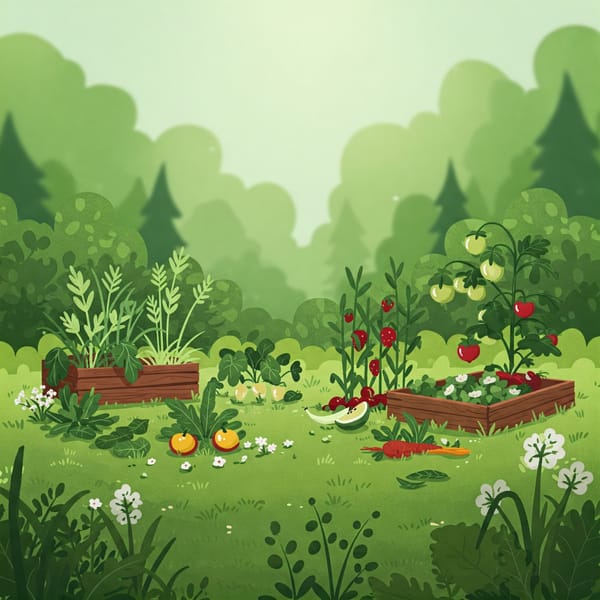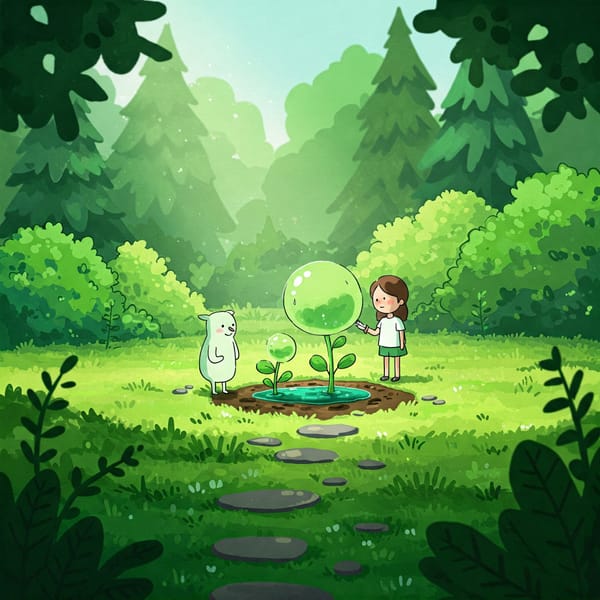Water-Wise Gardening in Drought-Prone Areas: A Comprehensive Guide

TLDR
This report provides a comprehensive guide to water-wise gardening practices for drought-prone areas. It covers understanding drought, implementing conservation strategies, selecting appropriate plants, using efficient irrigation, rainwater harvesting, and considering ecological impacts. The guide emphasizes the importance of adapting gardening techniques to specific regional conditions for sustainable and resilient landscapes.
Water-Wise Gardening in Drought-Prone Areas: A Comprehensive Guide
Gardening in drought-prone areas presents unique challenges. This guide offers comprehensive strategies for creating sustainable and thriving gardens while conserving water.
Understanding Drought
Drought is a prolonged period of deficient precipitation. It's crucial to understand the different types of drought to implement effective water-wise gardening practices.
- Meteorological drought: Characterized by prolonged dry weather patterns.
- Agricultural drought: Occurs when there's insufficient soil moisture for crops.
- Hydrological drought: Impacts water supply in the broader water system.
- Socioeconomic drought: Affects human populations by impacting the supply and demand of commodities, health, and quality of life.
- Ecological drought: Occurs when water scarcity significantly affects natural ecosystems.
Droughts develop gradually, making them challenging to predict. Climate change exacerbates the frequency and intensity of drought events. The consequences of drought are extensive, impacting agriculture, ecosystems, water resources, public health, the economy, and increasing the risk of wildfires.
Drought significantly stresses plants by reducing water content, inhibiting growth, disrupting photosynthesis, and weakening defenses. It also affects soil water dynamics. Sandy soils have low water-holding capacity, while clay soils have high capacity but can hinder water availability. Organic matter improves water retention in all soil types.
Water Conservation Strategies
Several effective techniques can minimize water use in gardens:
- Water plants deeply but less frequently to encourage deeper root growth.
- Water early in the morning or late in the evening to reduce evaporation.
- Direct water to the soil level using watering cans, soaker hoses, or drip irrigation.
- Group plants with similar water needs (hydro-zoning) for efficient irrigation.
- Choose drought-tolerant plant varieties.
- Reduce lawn area and opt for groundcovers or low-maintenance alternatives.
- Avoid pruning, fertilizing, and applying pesticides during drought stress.
- Collect and recycle water when possible.
- Use shut-off nozzles on hoses to prevent water waste.
- Space plants to shade the soil and reduce evaporation.
- Maintain a weed-free garden.
- Incorporate hydrogels into the potting mix for container plants.
- Adjust watering practices based on plant needs and soil type.
- Regularly harvest crops to encourage plant health.
- Prioritize native and drought-tolerant species and invest in water-efficient irrigation systems.
- Check for and repair leaks and participate in community water conservation initiatives.
Combining multiple conservation techniques maximizes water-saving efforts. Timing of watering and careful observation of plant and soil moisture are critical.
Soil Preparation and Mulching
Proper soil preparation and mulching are essential for enhancing water retention. Incorporating organic matter improves soil structure and water-holding capacity. Mulching reduces evaporation, suppresses weed growth, regulates soil temperature, and enriches soil fertility. Organic mulches like shredded leaves, bark, compost, straw, and dried grass clippings are effective. A 2-3 inch layer of mulch is recommended, keeping it away from plant stems. Soil cultivation can also improve water penetration. Healthy soil, rich in organic matter and protected by mulch, acts as a natural water reservoir.
Selecting Drought-Tolerant Plants
Choosing the right plant species is crucial for gardening in drought-prone regions. Drought-tolerant plants have adaptations like deep root systems, reduced leaf area, waxy coatings, water storage capabilities, and dormancy.
Many resources provide lists of drought-tolerant plants. Examples include asters, beardtongues, black-eyed Susans, blanket flowers, blue fescue, bugleweed, agaves, manzanitas, sagebrushes, California lilacs, lavenders, rosemaries, oaks, junipers, butterfly weed, yarrow, and succulents. Plants native to Mediterranean climates are often well-suited to drought conditions. Remember that even drought-tolerant plants need regular watering during establishment.
Drought-tolerant plants have diverse adaptations, offering gardeners many options. It's important to distinguish between "low-water" and "drought-tolerant" plants. Categorizing drought-tolerant plants by water needs and growth habits is helpful for efficient water management and garden design. Hydro-zoning, using inorganic mulches for certain plants, and considering plant function in the landscape are all important.
Advantages of Native Plant Species
Native plant species offer ecological and practical benefits. They are adapted to the local climate and soil conditions, requiring less supplemental watering. Native plants support local wildlife, enhance biodiversity, and are often more resistant to local pests and diseases. Choosing native plants of local provenance is best. Proper placement according to light and soil preferences is crucial.
Efficient Irrigation Methods
Efficient irrigation is crucial in drought-prone areas. Drip irrigation and soaker hoses are effective alternatives to traditional sprinklers. Drip irrigation systems are customizable, water-efficient, and durable, but can be costly and complex to set up. Soaker hoses are more affordable and easier to install but less customizable and durable.
Best practices for water-efficient irrigation systems include installing drip lines under mulch, choosing appropriate emitters, using timers, checking for leaks and clogs, positioning drip lines for new plants, using pressure regulators and filters, and avoiding overly long mainlines. Regular inspection and maintenance are essential.
Rainwater Harvesting
Rainwater harvesting is a sustainable method for supplementing garden irrigation. Techniques include using rain barrels, underground cisterns, rain gardens, rooftop garden systems, permeable paving, and passive rainwater harvesting.
Integrating rainwater harvesting into a water-wise gardening strategy involves calculating potential harvest, using leaf screens and first flush diverters, opaque storage tanks, filtration systems, and directing overflow away from the foundation.
Ecological Considerations
Drought has profound ecological consequences. It can disrupt natural systems, harm plant and animal species, reduce plant growth, increase wildfires and insect outbreaks, alter nutrient cycling, and cause local extinctions.
Gardeners play a role in mitigating drought's negative effects by choosing native and drought-tolerant plants, creating habitats for pollinators, reducing pesticide and herbicide use, implementing water conservation techniques, improving soil health, avoiding invasive non-native species, supporting local conservation efforts, and educating others.
Adapting to Diverse Environments
Water-wise gardening strategies should be tailored to specific regional conditions. Consider local climate, soil type, sunlight and shade, and research native plant species. Local botanical gardens, native plant societies, and agricultural extension services are valuable resources.
Conclusion
Water-wise gardening is essential for creating sustainable and resilient landscapes. By understanding drought, conserving water, selecting appropriate plants, using efficient irrigation, and embracing rainwater harvesting, gardeners can reduce water consumption and contribute to ecological health.




